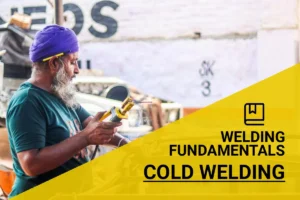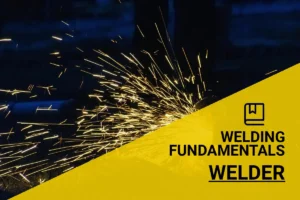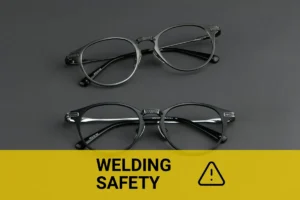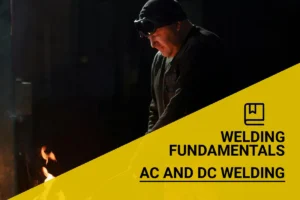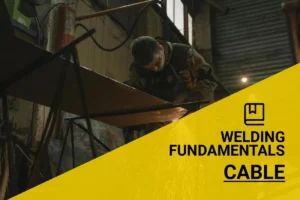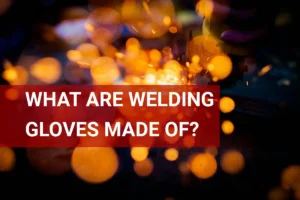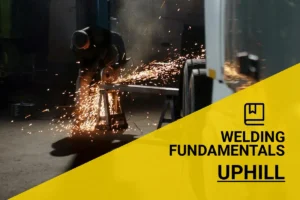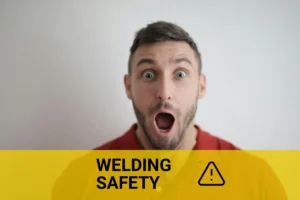Can You Look at the Eclipse Through a Welding Mask? Exploring Safety, Equipment, and Alternatives
Published on: March 19, 2025 | Last modified: March 4, 2025
By: Joe Carter
An eclipse happens when one celestial body, like the moon, passes in front of another, such as the sun. This blocks the sun’s light from reaching our eyes.
If you’re wondering can you look at the eclipse through a welding mask, it’s crucial to know why this matters. Not using proper eye protection can cause serious damage. I’ve seen firsthand how important safety is when watching something as intense as an eclipse.
In this article, I’ll explore the types of eclipses, necessary equipment, safe observation steps, and precautions to take while watching. We’ll dive into the unique issues of observing an eclipse through a welding mask, discuss aftercare and advanced tips, and suggest alternatives for your viewing experience. You’ll find answers to questions like can you watch the eclipse with a welding helmet, and learn why safety should be your top priority.
Contents
- Can You Look at the Eclipse Through a Welding Mask?
- What is an Eclipse?
- Types Of Eclipses in the Context Of Looking at the Sun
- Before You Start (Prerequisites)
- Steps to Safely Observe the Eclipse
- Precautions
- Types Of Protective Equipment for Eclipse Viewing
- Factors Affecting Eclipse Observation Safety
- Unique Issues Of Observing an Eclipse Through a Welding Mask
- Welding Mask Shade Numbers: Understanding the Ratings
- Aftercare, Inspection, and Advanced Tips for Eclipse Viewing
- Why This is Worth It: Advantages
- Applications Across Different Fields
- What Are the Alternatives to Using a Welding Mask for Eclipse Viewing?
- Frequently Asked Questions (FAQs)
- Conclusion
- References
Can You Look at the Eclipse Through a Welding Mask?
Yes, you can look at the eclipse through a welding mask, but it depends on the shading. Use a mask with at least a shade 14 filter. This ensures safe viewing without damaging your eyes.
What is an Eclipse?
An eclipse occurs when one celestial body moves into the shadow of another. In a solar eclipse, the Moon passes between the Earth and the Sun, blocking sunlight. This can create a total eclipse, where the Moon completely obscures the Sun, or a partial eclipse, where only part of the Sun is covered. Eclipses happen only during a new moon and occur somewhere on Earth every 18 months, on average.
Now, I remember witnessing a solar eclipse with friends years ago. It was fascinating! We had questions about whether you can look at the eclipse through a welding mask. I was eager to try it, especially since I had my welding helmet nearby.
I’ve seen people use their helmets to watch the eclipse. Honestly, during the one I saw, using a welding helmet gave me a different perspective. Keep in mind that most welding helmets have different shade levels, typically between #10 and #14. This can affect visibility, so it’s wise to understand your helmet’s specifications. Can you look at the eclipse through a welding mask? It’s a great idea to check what you have on hand.
Types Of Eclipses in the Context Of Looking at the Sun
So, what types of eclipses require eye protection?
-
Partial Eclipse
A partial eclipse occurs when part of the Sun is obscured by the Moon. Don’t look at it through a welding mask unless it has a shade number of at least 14.
-
Total Eclipse
A total eclipse happens when the Moon completely covers the Sun. A welding mask isn’t safe even during this event. Use one with a shade rating of 14 or higher only during the brief totality phase. It is crucial to understand the importance of proper eye protection when welding to avoid serious harm, which you can learn more about in the risks of welding unprotected.
-
Annular Eclipse
An annular eclipse occurs when the Moon covers the center of the Sun, creating a ring-like appearance. You can’t view this type with a welding mask. Use solar viewing glasses or a high-rated welding helmet for protection.
-
Hybrid Eclipse
A hybrid eclipse shifts between total and annular phases. Like the others, don’t look through a standard welding mask. Opt for specialized eclipse glasses during the entire event for safety.
-
Lunar Eclipse
A lunar eclipse occurs when the Earth casts a shadow over the Moon. Good news—you can watch this safely without eye protection! Just find a comfy spot and enjoy the view!
You should now have a good understanding of solar and lunar eclipses. In the next part, we’ll discuss prerequisites for observing them.
Before You Start (Prerequisites)
What do you need to view an eclipse through a welding mask?
- Welding Helmet: Use a helmet like the Lincoln Electric K3741-1. It’s crucial for eye protection during the eclipse.
- Filter Lens: Get a filter with a #14 shade. This shade blocks harmful UV and infrared rays.
- Welding Goggles: Consider goggles like the DEWALT DPG82-11 for maximum safety if your helmet isn’t properly equipped.
- Flashlight: Have a flashlight, such as the Fenix PD36R. It helps you see details when the light changes during the eclipse.
So far we covered the necessary prerequisites. Next, let’s look at the safe methods for observing the eclipse.
Steps to Safely Observe the Eclipse
Now, we’ll cover how to view the eclipse safely with a welding mask.
-
Check Your Welding Helmet Shade
Ensure your welding helmet has at least a filter shade of 14. This is crucial, as lower shades won’t provide enough protection from the sun’s rays. If you’re unsure, compare different shades using an eclipse poster. You don’t want any damage to your eyes, so this is essential!
When working on projects like repairing a gas tank, it’s important to understand the proper techniques and precautions. For detailed steps on safe practices, you can explore how to weld a gas tank.
Using a helmet that doesn’t meet shade requirements can cause serious eye injuries in as little as 1 minute. This simple check can save your sight.
-
Verify Secure Fit
Put on your welding helmet and ensure it fits snugly without gaps. A secure fit keeps sunlight from sneaking in and reaching your eyes. An ill-fitted helmet might cause neck pain or distractions while observing the eclipse. For those seeking to enhance their visibility during welding, exploring effective vision improvement techniques is beneficial.
Adjust the straps for comfort, ensuring all edges cover your face securely. This snug fit can make or break your eclipse-viewing experience. It’s all about safety!
-
Position Yourself Wisely
Find a clean area away from obstructions. Positioning is key! You should have a clear line of sight to the eclipse without any trees or buildings blocking your view. When the eclipse begins, don’t get caught off guard.
Stay a good distance from crowds to avoid accidents. You’ll want a peaceful environment to enjoy the experience without distractions!
-
Maintain Comfortable Viewing Time
Plan to take breaks every 5-10 minutes. Even with proper protection, it’s wise to give your eyes a rest. Staring too long can cause eye fatigue, even with safety measures.
Set a timer if needed to remind you! Balancing your view with breaks can enhance your overall experience. Enjoy the moment without risk!
-
Take Notes or Photos Safely
If you plan to document the eclipse, use a proper camera with an eclipse filter or hold it at a safe position. Many skip this step and regret missing precious visuals without proper setup.
Never take off the helmet to snap a shot! Keeping the welding helmet secure ensures your eyes stay protected while you capture memories. Get those photos, but be smart about it!
We covered safe observing methods, necessary equipment, and eye protection here. Next, we will cover precautions to consider.
Precautions
Let’s cover safety measures for eclipse viewing.
- Inspect Your Mask: Always check the filters; they should block harmful light. I recommend a mask with shade levels of 14 or higher.
- Proper Fit: Ensure the helmet fits snugly to avoid gaps. A tight fit protects you from indirect light.
- Don’t Remove Your Mask: Keep it on until the eclipse ends to prevent eye damage. Use a high-quality welding helmet.
- Sun Exposure: Limit exposure time; look for only 5–10 seconds at a time. I’ve used models like the ESAB Sentinel A50.
Your safety is paramount—don’t take chances with your eyesight!
We have now covered precautions for eclipse viewing. Next, we will examine types of protective equipment for safe observation.
Types Of Protective Equipment for Eclipse Viewing
Let’s move on to the types. We’ll cover Welding Masks, Eclipse Glasses, Solar Viewers, and Welder’s Goggles.
-
Welding Masks
Welding masks protect your eyes from intense light and harmful rays. They usually have a shade rating of 10 to 14, filtering strong sunlight during an eclipse. A mask with a shade of 14 or higher offers protection, but not all masks are designed for eclipse viewing. It’s crucial to address any potential eye injuries promptly when exposed, and you can explore treating flash burn in eyes from welding.
-
Eclipse Glasses
Eclipse glasses are specifically made for direct solar viewing. They must meet the ISO 12312-2 safety standard, blocking 99.999% of sunlight. Use them only for solar events like eclipses to keep your eyes safe.
-
Solar Viewers
Solar viewers resemble glasses but are often attached to telescopes. They significantly reduce the sun’s brightness. It’s essential to use them; otherwise, you risk damaging your eyesight.
-
Welder’s Goggles
Welder’s goggles offer eye protection during welding. They range in shade from 3 to 11, which isn’t sufficient for eclipse viewing. I’ve learned that these goggles might not provide adequate protection. While they’re great for welding, I wouldn’t rely on them for watching an eclipse. It’s important to consider how welding light affects cameras as it can help highlight the potential risks involved with intense light exposure.
-
Specialized Filters
Specialized filters are used with instruments like telescopes or cameras to safely view the sun. They’re crucial for permanent setups, ensuring consistent protection. Always check the specifications to confirm they’re eclipse-ready!
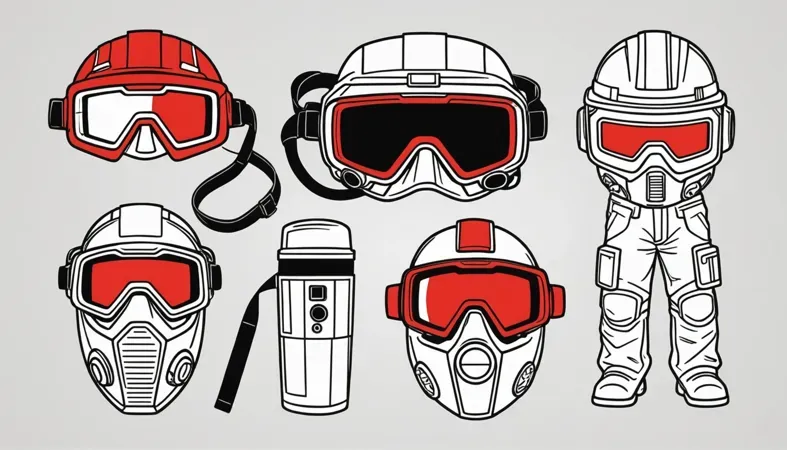
Factors Affecting Eclipse Observation Safety
What factors can impact viewing the eclipse safely through a welding mask?
-
Mask Shade Level
The shade level of your welding helmet is crucial. A minimum shade of 14 is required for safe eclipse observation, as it sufficiently blocks harmful rays.
-
Duration Of Exposure
Short exposure may be fine, but prolonged viewing is dangerous. Even for brief periods, ensure your helmet shade is adequate to prevent eye damage.
-
Environmental Conditions
Clouds, fog, or other weather conditions can affect visibility. These factors can obstruct your view or increase risk if you can’t see the eclipse clearly.
-
Distance From the Eclipse
Your distance matters. Viewing from farther away can reduce intensity, but your helmet still needs to provide protection.
-
Presence Of Reflections
Reflections can be deceptive. If you’re near reflective surfaces, stray light can increase exposure risk, even with a welding mask.
Unique Issues Of Observing an Eclipse Through a Welding Mask
Let’s look at some unique issues when viewing an eclipse with a welding mask.
-
Inadequate Shade Protection
The eclipse may need a higher shade number than your welding mask provides. Ensure it’s at least Shade 14. If not, switch to a darker mask to prevent eye damage.
-
Possible Visual Obstruction
Many welding masks limit your field of vision. Make sure the mask fits well. Test visibility by moving the mask in different positions before viewing.
-
Heat Buildup in the Mask
The eclipse can cause overheating inside the mask. Notice if your face feels warmer than usual. To resolve it, use a fan or take breaks to cool down.
-
Suitability Of Lens Material
The eclipse may require a lens designed for high-intensity light. Always check if your lens is suitable for celestial viewing to avoid smudges or damage from intense light.
-
Comfort During Extended Viewing
The eclipse can last for hours, and a welding mask might feel heavy and uncomfortable. Ensure your mask has padding and adjust the straps to reduce pressure on your head and face.
Welding Mask Shade Numbers: Understanding the Ratings
It’s essential to know how shade numbers work for your safety when viewing an eclipse.
| Shade Number | Light Transmission | Recommended Use |
|---|---|---|
| 3 | Very High (about 70%) | Not safe for solar viewing |
| 5 | High (about 50%) | Not safe for solar viewing |
| 10 | Moderate (about 20%) | Can cause eye damage during an eclipse |
| 14 | Low (about 1%) | Safe for eclipse viewing |
| 15+ | Minimal (less than 0.5%) | Highly safe for eclipse viewing and intense light |
These shade numbers help you determine what’s suitable for safely viewing an eclipse. Remember, sticking with a shade 14 or higher gives the best protection!
Aftercare, Inspection, and Advanced Tips for Eclipse Viewing
Here’s helpful advice for after viewing the eclipse safely with protective gear.
Aftercare Tips
After watching the eclipse with your welding mask, clean the lenses immediately. Dust and debris can scratch them. Use a microfiber cloth dampened with clean water to wipe the lenses gently; a lens cleaner can also work well. Store it in a cool, dry place for longevity. If your glasses suffer from welding spatter damage, find effective solutions on fixing welding spatter on glass.
Inspection
Inspect your welding mask for signs of structural damage after the eclipse. Check the lenses for pitting or scratches—any uneven areas may indicate wear. I recommend using a tool like an optoscope, which lets you inspect lenses easily and effectively. Welding techniques also require understanding various positions, such as 3G, to ensure safety and precision. Explore more about the essentials of 3G welding.
Expert Tips
If you’ve been doing this for a while, consider experimenting with different shade levels on your helmet for varied brightness. A shade rating of 14 might not block enough light for some observers. Combine a welding mask with solar filter lenses rated at 99.999% transmissivity to enhance your gear—this simple adjustment can vastly improve your eclipse-watching experience.
Why This is Worth It: Advantages
The main benefit of using a welding mask to view an eclipse is its high level of protection. I’ve seen people use it effectively for safely observing the sun during this rare event.
Additionally, a welding mask offers reliable UV protection, a sturdy build, and adjustable settings. Many masks fit comfortably, making your experience enjoyable and stress-free.
Applications Across Different Fields
People use welding masks for protection in bright environments. They have many uses, including:
- Solar Studies: Scientists use welding masks for solar observations. The different shades protect their eyes while they analyze solar activity, making them popular among amateur astronomers.
- Outdoor Events: At festivals, people wear welding masks to safely view eclipses. It’s a cost-effective way to enjoy solar events without spending on specialized eyewear.
- Photography: Photographers use welding masks to capture unique sunlit effects during eclipses. It serves as a practical tool for both safety and artistic expression.
- Education: Schools provide welding masks during outdoor science lessons on eclipses. They help teach students about solar phenomena while ensuring eye safety.
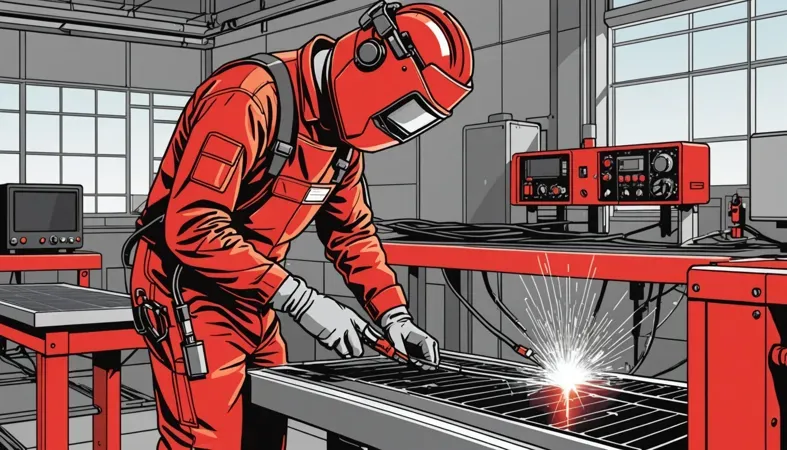
What Are the Alternatives to Using a Welding Mask for Eclipse Viewing?
There are safer options for viewing an eclipse. Consider using eclipse glasses, like those made by American Paper Optics. They’re specially designed to block out harmful rays, making them ideal for this purpose.
Another option is a pinhole projector. This simple device allows you to watch the eclipse indirectly. Just poke a small hole in a piece of cardboard and let the sunlight pass through; you’ll see the eclipse projected on a flat surface. Through years of practice, I’ve come to understand that safety is key when enjoying celestial events.
Frequently Asked Questions (FAQs)
Now let us look at some unique questions I typically get asked.
Can I Watch the Eclipse Using a Welding Helmet?
Yes, you can watch the eclipse using a welding helmet. Just make sure the lens has a shade rating of 14 or higher. This rating blocks out harmful rays effectively, protecting your eyes from damage at over 100,000 lux (Lumens Per Square Meter) during the eclipse. When considering safety measures for observing high-intensity light sources like from a welding arc, it’s essential to know if it’s safe to view welding from a distance.
What Shade Lens in a Welding Helmet is Safe for Watching an Eclipse?
A welding helmet with a shade 14 lens is safe for watching an eclipse. It ensures that over 99.99% of harmful UV rays are blocked, allowing you to enjoy the view without risking damage to your eyes.
Is It Safe to Look at the Eclipse With a Welding Mask?
Yes, it’s safe to look at the eclipse with a welding mask if it has the correct shade. A shade of 14 or above protects your eyes, shielding them from the sun’s intense brightness. Never use lower shaded lenses as they aren’t safe.
Can You Use a Welding Helmet for Solar Viewing?
Yes, you can use a welding helmet for solar viewing, but ensure it meets the necessary specifications. A proper helmet protects your eyes by ensuring harmful radiation levels fall below 0.1 mW/cm², preserving your eyesight while enjoying the eclipse.
Are There Any Risks When Watching an Eclipse With a Welding Helmet?
Using a welding helmet to watch an eclipse can be risky if the lens shade is inadequate. Lenses below a shade 14 can cause irreversible eye damage due to inadequate UV protection, leading to serious health issues over time.
Can You Watch a Partial Eclipse With a Welding Helmet?
Yes, you can watch a partial eclipse with a welding helmet. The same rule applies: ensure it has a shade of 14 or higher. Doing this allows safe viewing without exposure to harmful solar radiation during the event.
Conclusion
We’ve reached the end, and I appreciate you sticking around. We covered what an eclipse is, types of eclipses, prerequisites before viewing, steps for safe observation, precautions, protective equipment, factors affecting safety, unique issues with welding masks, aftercare, advantages, and alternative viewing options. This article also touched on frequently asked questions to enhance your understanding.
So, can you look at the eclipse through a welding mask? In short, it depends on the mask’s shade. A welding helmet with a shade rating of at least 14 is generally safe, as it blocks harmful rays. Feel free to reach out if you have further questions about using equipment like welding helmets for eclipse viewing or any other safety concerns.
For more insights and information on welding techniques, tips, and best practices, check out What is Welding for a wealth of resources available to you.
References
- American Welding Society. (2015). AWS D1.1/D1.1M: Structural Welding Code – Steel. Miami, FL: AWS.
- Weisman, J. (2011). Practical Welding Technology. Boca Raton, FL: CRC Press.
- Kalpakjian, S., & Schmid, S. R. (2014). Manufacturing Engineering and Technology (7th ed.). Upper Saddle River, NJ: Pearson.
Joe Carter is a retired welding professional with over 40 years of hands-on experience in the industry, spanning ship repair, structural welding, and even underwater projects. Joe is a master of MIG, TIG, and Stick welding. Passionate about mentoring the next generation of welders, Joe now shares his decades of expertise and practical insights to help others build rewarding careers in welding.
American Welding Society, Art, Eclipse Viewing, Eye Protection, Protective Gear, Safety Precautions, Solar Observation, Welding, Welding Helmet, Welding Mask, Welding Techniques
